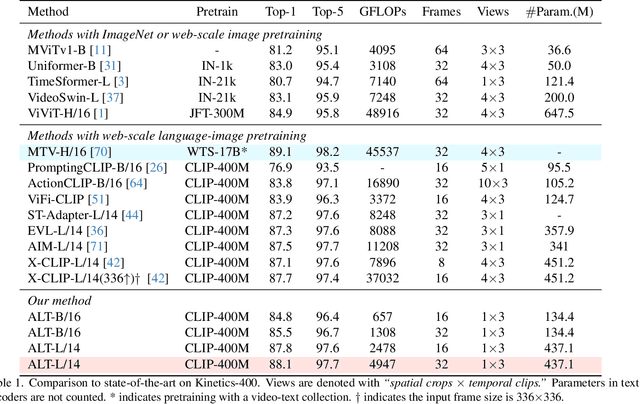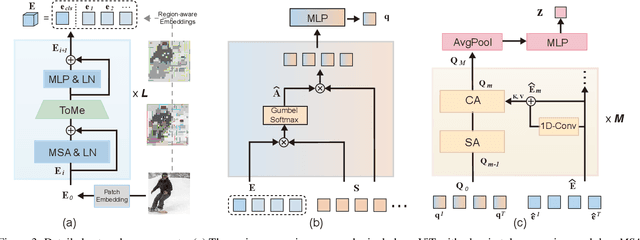Align before Adapt: Leveraging Entity-to-Region Alignments for Generalizable Video Action Recognition
Paper and Code
Nov 27, 2023



Large-scale visual-language pre-trained models have achieved significant success in various video tasks. However, most existing methods follow an "adapt then align" paradigm, which adapts pre-trained image encoders to model video-level representations and utilizes one-hot or text embedding of the action labels for supervision. This paradigm overlooks the challenge of mapping from static images to complicated activity concepts. In this paper, we propose a novel "Align before Adapt" (ALT) paradigm. Prior to adapting to video representation learning, we exploit the entity-to-region alignments for each frame. The alignments are fulfilled by matching the region-aware image embeddings to an offline-constructed text corpus. With the aligned entities, we feed their text embeddings to a transformer-based video adapter as the queries, which can help extract the semantics of the most important entities from a video to a vector. This paradigm reuses the visual-language alignment of VLP during adaptation and tries to explain an action by the underlying entities. This helps understand actions by bridging the gap with complex activity semantics, particularly when facing unfamiliar or unseen categories. ALT achieves competitive performance and superior generalizability while requiring significantly low computational costs. In fully supervised scenarios, it achieves 88.1% top-1 accuracy on Kinetics-400 with only 4947 GFLOPs. In 2-shot experiments, ALT outperforms the previous state-of-the-art by 7.1% and 9.2% on HMDB-51 and UCF-101, respectively.
 Add to Chrome
Add to Chrome Add to Firefox
Add to Firefox Add to Edge
Add to Edge